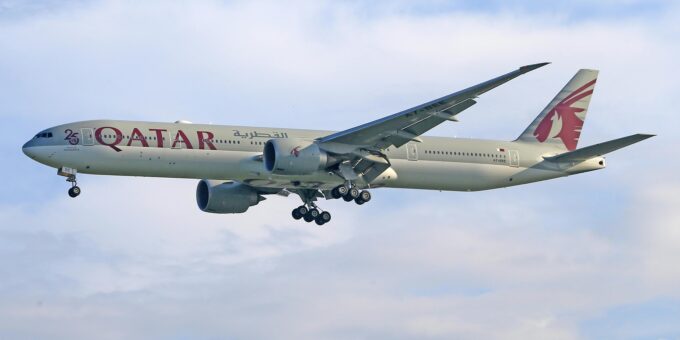
From the dawn of human exploration, celestial bodies have been used as guiding lights across vast oceans and endless deserts. Celestial mapping—the practice of using stars, planets, and the sun to determine one’s position—was once the lifeline of travelers and explorers. In aviation, it carried tremendous importance before radio navigation and GPS entered the scene. Pilots navigating over oceans or polar regions had no landmarks, so they relied on the heavens to stay on course.
In modern times, some might consider celestial navigation a relic of history. After all, why glance at the stars when a GPS satellite provides pinpoint accuracy within seconds? Yet, the aviation industry is rediscovering the importance of celestial mapping as both a backup system and a training tool. The ability to apply celestial mapping in modern airline systems could mean the difference between safety and disaster in situations where technology falters.
The truth is simple: while technology advances, redundancy is safety’s best friend. And celestial mapping is redundancy at its finest.
The Evolution of Navigation in Aviation
When commercial flight first took off in the early 20th century, pilots relied heavily on visual landmarks, compasses, and rudimentary maps. These methods worked well for short distances but quickly became unreliable over oceans or deserts. This gap was filled by celestial navigation, which allowed aviators to determine their latitude and longitude by observing the positions of celestial bodies.
During the 1930s and 1940s, airliners and military aircraft were often equipped with astrodomes—transparent bubbles on the fuselage—allowing navigators to use sextants to measure star altitudes. Pan American Airways famously trained its pilots in celestial navigation to fly across the Atlantic and Pacific, making them pioneers of global aviation routes.
With the introduction of radio navigation in the mid-20th century, followed by satellite-based systems like GPS in the 1980s, celestial navigation was gradually phased out. Airlines retired their sextants, and younger pilots trained almost exclusively on electronic navigation systems.
But history has a way of circling back. As GPS vulnerabilities become clear, celestial mapping is making its quiet return to cockpit relevance.
Celestial Mapping in Modern Context
Unlike the manual techniques of the past, today’s celestial mapping is sleek, digital, and automated. Rather than requiring pilots to spend minutes peering through a sextant, modern systems use advanced star trackers and sensors integrated with flight management computers.
These systems capture starlight, compare it with onboard celestial charts, and automatically calculate the aircraft’s position. The data can then be fed directly into the avionics suite, giving pilots a second opinion on their location. The process is seamless and requires little manual intervention, yet it offers the peace of mind that comes from redundancy.
Airlines applying celestial mapping today are not trying to replace GPS but to complement it. If GPS signals are jammed, spoofed, or unavailable in polar regions, celestial mapping provides an independent, interference-free backup. The modern context isn’t about nostalgia—it’s about resilience.
Fundamentals of Celestial Navigation
At its heart, celestial navigation relies on three pillars: observation, timekeeping, and calculation. Pilots (or automated systems) measure the angle between a celestial body—usually the sun, moon, planets, or stars—and the horizon. This angle, when matched with precise time from an atomic or chronometer-standard clock, can be converted into position lines on a navigation chart.
Traditionally, aviators used bubble sextants that allowed them to create an artificial horizon, crucial when flying above clouds or at night. By observing multiple celestial bodies and cross-checking their angles, a navigator could pinpoint the aircraft’s latitude and longitude.
Modern automation eliminates human error by using cameras, star sensors, and sophisticated software. These tools can track multiple stars simultaneously and instantly calculate a position fix. While the fundamental principles remain unchanged, the application is now faster and more reliable.
Why Airlines Still Value Celestial Mapping
Some may ask, “Why bother with celestial mapping when GPS already works so well?” The answer lies in redundancy and security.
-
Redundancy: Modern aircraft depend heavily on satellites. A single-point failure—whether from jamming, hacking, or technical outages—could create major risks. Celestial mapping ensures there’s always a fallback option.
-
Independence: Unlike satellites, stars cannot be shut down or manipulated by adversaries. They are free, natural, and accessible anywhere on Earth.
-
Training Value: Pilots trained in celestial mapping gain a deeper understanding of navigation fundamentals. This builds confidence and situational awareness, qualities that prove invaluable in emergencies.
Airlines still value celestial mapping because it represents an extra layer of safety—something aviation regulators and passengers alike deeply appreciate.
Celestial Mapping vs. GPS
GPS is fast, precise, and universally accepted. Celestial mapping is timeless, unjammable, and self-reliant. Both systems have their strengths and weaknesses.
| Feature | GPS | Celestial Mapping |
|---|---|---|
| Accuracy | High (within meters) | Moderate (within nautical miles) |
| Vulnerability | Susceptible to jamming/spoofing | Immune to interference |
| Speed | Instantaneous | Slower (manual or semi-automated) |
| Availability | Works globally (except polar anomalies) | Works globally, requires visibility of stars |
| Dependency | Relies on satellites | Relies on celestial bodies and clear skies |
For everyday operations, GPS is unmatched. But in worst-case scenarios, celestial mapping offers reliability when satellites are compromised. Pilots equipped with both systems have the best of both worlds.
You Can Also Read : How to Use Astronomy for Safer Airline Navigation
Applications in Airline Systems
Celestial mapping can be integrated into airline operations in multiple ways:
-
Flight Planning: Long-haul flights over oceans or remote areas can include celestial waypoints as backups.
-
In-flight Adjustments: Automated systems can cross-check GPS with celestial data, flagging inconsistencies.
-
Polar Routes: Airlines flying over the Arctic and Antarctic, where GPS signals can degrade, benefit significantly from celestial mapping.
-
Training and Drills: Celestial mapping exercises prepare crews for technology-denied environments.
The application is not about replacing GPS but ensuring continuity of navigation under all conditions.